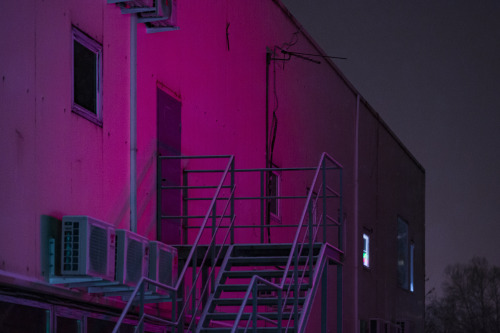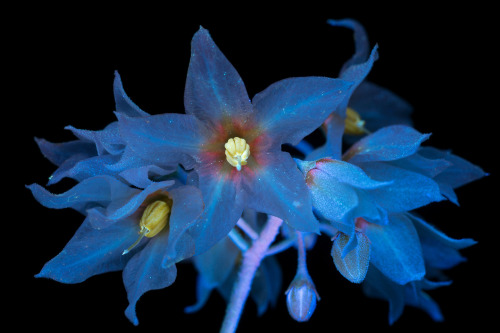Venomrosepetal - Lovie🕷

More Posts from Venomrosepetal and Others



‘Heavenly Bodies’
photographed by Freddie Ardley
Instagram @freddieardley





taysajorge
I hate when you’re like “fuck it’s so hot” and someone’s like “well why don’t you take your jacket off?” Like bitch no…this is my outfit
big fan of love, being in love and making others feel loved

A species of nightshade (Solanum) present in southern California. Quite a few varieties grow in the area and when only in flower it can be tricky to identify without advanced knowledge. White flowers usually express pink or blue fluorescence, and I favor the blue which looks almost gauzy and translucent.





Some photos of the 31 January 2018 “Super Blue Blood Moon” eclipse, taken in Tucson, Arizona, this morning.

In the Heart of the Heart Nebula : What excites the Heart Nebula? First, the large emission nebula dubbed IC 1805 looks, in whole, like a human heart. Its shape perhaps fitting of the Valentine’s Day, this heart glows brightly in red light emitted by its most prominent element: excited hydrogen. The red glow and the larger shape are all created by a small group of stars near the nebula’s center. In the heart of the Heart Nebula are young stars from the open star cluster Melotte 15 that are eroding away several picturesque dust pillars with their energetic light and winds. The open cluster of stars contains a few bright stars nearly 50 times the mass of our Sun, many dim stars only a fraction of the mass of our Sun, and an absent microquasar that was expelled millions of years ago. The Heart Nebula is located about 7,500 light years away toward the constellation of the mythological Queen of Aethiopia (Cassiopeia). via NASA





-
 mlithium2 liked this · 3 months ago
mlithium2 liked this · 3 months ago -
 kawaiidesu reblogged this · 3 months ago
kawaiidesu reblogged this · 3 months ago -
 mypolyvox reblogged this · 9 months ago
mypolyvox reblogged this · 9 months ago -
 mypolyvox liked this · 9 months ago
mypolyvox liked this · 9 months ago -
 cannsoup liked this · 10 months ago
cannsoup liked this · 10 months ago -
 vibratorygem reblogged this · 10 months ago
vibratorygem reblogged this · 10 months ago -
 imextremelynice reblogged this · 10 months ago
imextremelynice reblogged this · 10 months ago -
 fourandmoreeyes liked this · 11 months ago
fourandmoreeyes liked this · 11 months ago -
 thebluerequiem liked this · 11 months ago
thebluerequiem liked this · 11 months ago -
 shishka reblogged this · 11 months ago
shishka reblogged this · 11 months ago -
 meatbiter reblogged this · 11 months ago
meatbiter reblogged this · 11 months ago -
 meatbiter liked this · 11 months ago
meatbiter liked this · 11 months ago -
 suturella liked this · 1 year ago
suturella liked this · 1 year ago -
 shurichii liked this · 1 year ago
shurichii liked this · 1 year ago -
 star444xo reblogged this · 1 year ago
star444xo reblogged this · 1 year ago -
 star444xo liked this · 1 year ago
star444xo liked this · 1 year ago -
 davidneto2 liked this · 1 year ago
davidneto2 liked this · 1 year ago -
 xilenzo reblogged this · 1 year ago
xilenzo reblogged this · 1 year ago -
 gomiusa liked this · 1 year ago
gomiusa liked this · 1 year ago -
 lizardcave reblogged this · 2 years ago
lizardcave reblogged this · 2 years ago -
 suzumebachee liked this · 2 years ago
suzumebachee liked this · 2 years ago -
 bushidopapi reblogged this · 2 years ago
bushidopapi reblogged this · 2 years ago -
 bushidopapi liked this · 2 years ago
bushidopapi liked this · 2 years ago -
 heavenchain-piercingmoon reblogged this · 2 years ago
heavenchain-piercingmoon reblogged this · 2 years ago -
 cherry-air liked this · 2 years ago
cherry-air liked this · 2 years ago -
 shyyyguy reblogged this · 2 years ago
shyyyguy reblogged this · 2 years ago -
 mabaarif reblogged this · 2 years ago
mabaarif reblogged this · 2 years ago -
 mabaarif liked this · 2 years ago
mabaarif liked this · 2 years ago -
 glitterywasteland reblogged this · 2 years ago
glitterywasteland reblogged this · 2 years ago -
 luvviedemie reblogged this · 2 years ago
luvviedemie reblogged this · 2 years ago -
 literallythecutestgirlever reblogged this · 2 years ago
literallythecutestgirlever reblogged this · 2 years ago -
 lethargicrabbit liked this · 2 years ago
lethargicrabbit liked this · 2 years ago -
 amv-source reblogged this · 2 years ago
amv-source reblogged this · 2 years ago -
 chateau1 liked this · 2 years ago
chateau1 liked this · 2 years ago -
 xenonsphinx liked this · 2 years ago
xenonsphinx liked this · 2 years ago -
 renas-rp-hub liked this · 2 years ago
renas-rp-hub liked this · 2 years ago -
 slayknight reblogged this · 2 years ago
slayknight reblogged this · 2 years ago -
 yugiioh reblogged this · 2 years ago
yugiioh reblogged this · 2 years ago -
 misa-to reblogged this · 2 years ago
misa-to reblogged this · 2 years ago -
 crookeddazestudent-us reblogged this · 2 years ago
crookeddazestudent-us reblogged this · 2 years ago -
 crookeddazestudent-us liked this · 2 years ago
crookeddazestudent-us liked this · 2 years ago -
 harpielady reblogged this · 2 years ago
harpielady reblogged this · 2 years ago -
 0ldboy reblogged this · 2 years ago
0ldboy reblogged this · 2 years ago
